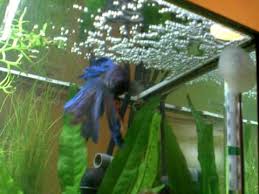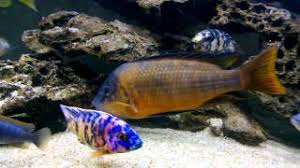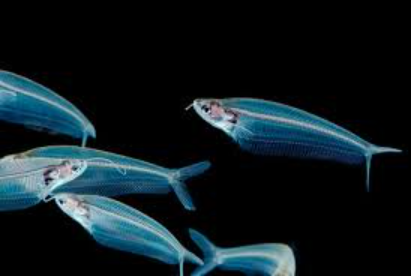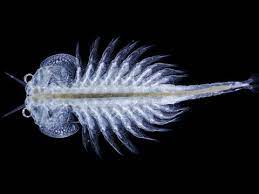How to Care For and Breed Bettas
11 months ago admin 0
Breeding Bettas
Breed Bettas. Let’s talk about the betta fish. Now the betta fish is a very popular among fish keepers and beginners alike. The only downside to this is that a lot of beginners don’t really know what they’re doing with the betta fish. Or they’re misinformed about how to care for the betta fish and so they end up living their lives in tiny little bowls. They’re often overfed which can lead to constipation and there’s just so many problems with how betta fish are being treated sometimes. There’s just so many people out there that just don’t really know that much about the betta fish.
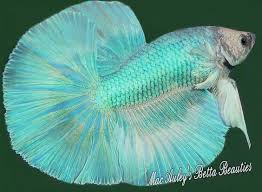
These fish were originally created over 600 years ago through selective breeding in Thailand from their relatives who lived in small streams and rice paddies. The fish were specifically bred for aggression, to be used for fighting. Which is why they are also known by their other name, the Siamese fighting fish. Now there are a very wide variety of different types of betta fish from crown tails to veil tails to marbled and dragon scale. There’s all different types and they’re all equally very beautiful fish.
Betta tank size
The minimum tank size to breed Bettas is two and a half gallons, bigger of course is always better. Five gallons or ten gallons is fantastic. Betta fish do need somewhere to be able to hide in their tanks and they also are very intelligent fish. So you want to put lots of decor or plants especially plants are great.
Betta tank set-up
Now for your tank setup most people will need a heater. Betta fish tend to do best in temperatures between 78 and 80 degrees So their temperature needs to be at a stable level to avoid a lot of fluctuations in the tank. Maybe 78 degrees during the day but it might drop down to 70 at night and you don’t realize it.So keeping a heater on the tank will make sure that that temperature stays stable. Unless you live in a really really hot environment like I’m dealing with. Right now I’m having a blast. My a/c it’s 110 degrees outside and I can barely keep my house at 80 degrees. But as soon as the temperature starts to drop outside for wintertime I do throw a heater in there to make sure that the temperature stays steady and stable for my fish.
You will want to have a thermometer on your tank to make sure that you’re regularly checking where your temperature is at. It will help to ensure there’s not any problems with your heater that you need to make any adjustments.
Water conditoning
So setting up your betta fishes tank. When you add the water to the tank you will want to add bacteria supplement as well as water conditioner. Betta fish pH, they do best between neutral and slightly acidic water. So on your tank you will want a filter and tank. There.are people that don’t use filters but you’re going to have to do a lot of waterchanges. And a lot of checking on the tank. Now the betta fish is not the most strong swimmer. Therefore you’ll want to use a low flow method of filtration. Bunge filters make great filtration for betta fish. Those usually have a low flow. Undergravel filters are also usually pretty good but they’re starting to become harder and harder to find.
Betta tank filtration
I’ve noticed internal filters tend to be pretty low flow from what I’ve experienced and seen. So those are going to be your better options. You don’t want a high power filter on your tank because it’s just going to blow the betta around and he’s gonna have a hard time swimming. He’s going to get exhausted and he’s probably going to get sick. Now when setting up your betta fishes tank for the first time you will want to try to cycle the tank before adding your fish into the tank. Cycling the tank will allow good bacteria to flourish. That will help in taking care of any toxins that are produced from fish waste.
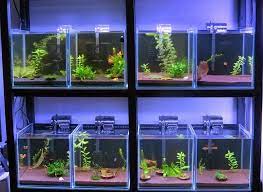
Betta fish diet
Now for the betta fishes diet most people will feed pellets or flakes . When you’re feeding pellets or flakes you want to look for a really high quality flake or pellet with high quality protein and preferably no fillers. Brands like New Life Spectrum tend to be great and actually have fish food in their fish food. Bettas can suffer from bloat and constipation from things like over feeding, feeding low quality pellets or flakes and not soaking the pellets or flakes before feedings. So to help prevent bloating and constipation you can soak your pellets or flakes into chlorinated water for a minimum 30 minutes before you’re feeding.
Without soaking the food first before feeding the food can expand in the gut leading to potential illnesses. Now the betta fish is an insectivore and they enjoy a wide variety of live and frozen food items such as blood worms, daphnia and brine shrimp. Because they get so easily constipated you really have to make sure that you are never over feeding. Because your betta fish will get very sick and constipated and a lot of times they end up with secondary problems from the constipation. And a lot of times they don’t make it.
Betta fish tank requirements
Bettafish are pretty aggressive and territorial as far as fish go. So they don’t really get along necessarily with many other fish. Male bettas don’t do well with other male bettas. They need to be housed in separate tanks. You never want to have two male betas in the same tank. They will fight and they will fight till the death. Female bettas can be kept in sorority tanks of at least a minimum of three female bettas. If there’s only two female bettas in the tank they might get territorial. And they probably will start to fight as if they were two males.
Now setting up a sorority tank or a community betta tank is not necessarily something that I would suggest for a beginner. You really need to know these fish and to be able to spot if there’s going to be a problem. Because even females can be extra territorial and act more like a male betta than a female. If you do decide to do a community tank with other fish then I would recommend a minimum of a 10 gallon tank. You want it to be well planted with lots of spaces to hide for the fish.
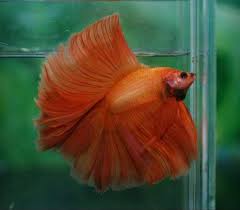
Betta fish companions
Now betta fish have very long flowing delicate fins. So you don’t want to put anything in there that’s going to be nipping at their fins and really bothering them. Fish like platys, neon tetras are pretty peaceful fish and tend to leave the betta fish alone for the most part. There’s always exceptions. Like I said I don’t recommend doing community tanks for someone who is a beginner. Unless you’re talking about just adding a couple of snails which my bettas always seem to just completely ignore and the snails are not really going to do anything to the betta. They’re always suctioned on to the side or the bottom of the tank. They can’t really swim around.
Other good tank mates are things like Corydoras catfish and shrimp. Cherry shrimp are really lovely but there is always the risk that your betta might decide that those shrimp are lunch, So just kind of keep that in mind. If you’re going to add shrimp into the tank then maybe some ghost shrimp since they are cheaper and considered a feeder.
Betta tank hygiene
Now the average betta fish can live between three to five years. There have been fish that have lived past the five years but it is a little bit more rare. So because betta fish are in smaller tanks they probably will need more frequent cleaning. You will want to check your water parameters now and then. As I said betta fish like neutral to it slightly acidic water. They like softer water and of course they want clean water. So you will probably need to do small water changes of fifteen to twenty percent at least once a week. Therefore the betta fish really can be a beautiful addition to your aquarium.
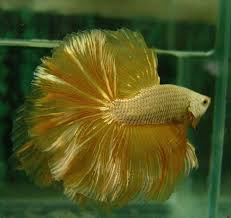
So we are going to breed bettas. Here is my breeding tank or my breeding bin. This is my megabox 12 liters which we can buy from department stores. My water is coming from a deep well source. Thats why you can pour it directly because it does not have chlorine. Then we need to fill the bin for about 3-4 inches deep. Then after we fill the bin with water we will then add water conditioners. This is the original Vitagold. Use this because it promotes and encourages spawning. We will just add a few drops. Then next will be the bleach. Of course its a joke! Next will be the water conditioner to make the water less stressful for fishes.
Aquacare
This is the Aquacare. I just put some amount here in this receptacle of used Vitagold then we add Aquacare on the water then next will be methylene blue. Methylene blue is good because it promotes development of eggs and it is good because it can prevent fungus on eggs. I just put it in the the used Vitagold receptacle. Then you pour a certain amount on the water and finally the SumaSuma bacteria and fungus. So I am using this to prevent sickness prevention of fungus in the eggs. Bettas seem to build better bubblenests when I use this product because the water is clean and free of harmful bacterias.
I will just add 3 drops of this. Then we mix the water and for the last preparation of the breeding bin we will put one whole dried Indian almond leaf in the Vitagold receptacle. Then you pour a certain amount on the water and finally the SumaSuma bacteria and fungus.
Now I will just add three drops of this then we mix the water and for the last preparation of the breeding bin we will put one whole dried Indian almond leaf. We put it right there on the water then we will place the bin on a silent place as you can see i have two bins already set up. Then we will put cardings in the middle for the bettas to not see their neighbors.
Final set-up
So this is the final set up today. Its around six in the evening. We will leave this overnight and we will check this out tomorrow morning. Now we have set up the breeding tanks and here are the other two set ups. So we will wait and check this out tomorrow. Heres an update. Now is quarter to nine in the morning October 21, Friday. Yesterday we have set up these breeding tanks and here they are. Now the water appears to be greenish because the tannins from the IAL leaves mixed with the color of the methylene blue, and here are the other set ups.
This one doesn’t change its color but its alright and for now what we will do is we still feed the betta pair morning and afternoon before we put them here in the breeding bins. So, October 21, 4:37PM we are here now and finished our set up. The plastic chimneys are placed. We used a recycled water bottle that I have cut. We will just make sure that the chimney has a right spacing above the water and not exactly on the water level and here they are. All the bins have chimneys on it and now we are going to put here the breeders. And now I have gathered my breeders.
Then the next step we are going to do in the breeding tank is we will remove the old and soaked IAL Leaves. When you have removed the leaf we will put a new IAL leaf just 2×2 inches in size to serve as the anchorage of the bubblenest. We will just put it on top of the water and put some on the other tanks. After that we will now put in the breeding pairs. Obviously we will first put the male betta then followed by the female inside the chimney and there they are already finished the whole set up for the other tanks and that is how you set up.
No covers
If you can see I do not put covers on top because I prefer to do this and it will make them adapt to the environment. They can tolerate noises and movements and they get used to it until they breed because they are used to the environment starting from the courting stage. Now we are going to leave them and check them out tomorrow and we will then have our update.
The breeding process
Good morning guys. October 22, 6:30am. Here is our breeding set up. We can see that the male have already made his bubblenest. The next thing we are going to do is to remove the chimney. Then they can start the breeding process. The chimney has been removed and we can see them dancing with each other. OK lets do an update. A while ago we removed the chimneys and so they have already started breeding. Let us see out of the 4 tanks if any of them has already done breeding. So the first has nothing at all. The females belly is still large and there are no eggs in the bubblenest.
Our second females belly is still large but I have seen a trace of egg in the bubblenest. And because the females belly is still large we will still not disturb them. I think the breeding is still not done. These other 2 tanks, this one has lots of eggs seen on the bubblenest. This pair has many eggs on its BBN and as you can see the female betta lies on one corner and the male comes beneath the bubblenest guarding the eggs and so this one is a success.
Last tank
And for the last tank, eggs are evidently numerous on the bubblenest and here is the female betta the belly part seems to be thin meaning the eggs were expelled alraedy and the male betta is underneath the bubblenest guarding the eggs and what we will do next since the breeding is finished, we will now remove the female bettas for the female to recover and have her rest.
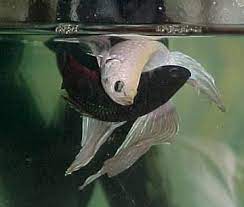
Removal of females
In removing you just use a fish net very slowly then you put it on her individual tank then the other one and we will just leave these here with the father and here is the male betta tending to the eggs until they hatch. Thats the same set up right there. We will have our update tomorrow and we will check the other 2 betta pairs if it is a success or a failed breeding.
Update
October 23; here are the first two pairs that succeeded in breeding. The third pair has not yet bred successfully, still have nothing. The females belly is still large and then the fourth one. I just removed the female betta from this tank because a while ago I’ve seen the female bettas belly was so thin and i think this one is a success and as you can see the male betta is on guard mode under the bubblenest. We may not see the eggs clearly on the bubblenest but our basis would be if we see the females belly thin and the female is lying only on one corner that means that they have already finished breeding.
So as of now the pairs are together for 24 hours without chimney.2 out of the 4 pairs have already bred and then the third pair also bred within 24 hours and then the last pair still nothing. If tomorrow there are still no changes I willrecondition the pair again for future breedings because I think the pair is too old for breeding. I just tested them if they can breed. Update tomorrow.
Results
Now lets have another update. Now is october 26, wednesday. I have already removed all the male bettas. If you can see it seems to have nothing in here but it really has an abundant number of frys that are swimming already. So out of 4 pairs that I have set up one has failed and the other three are a success and then after a few days they will become like this. Here are my other fry. You can see them lingering beneath the top surface of the water. It might not be seen clearly but it really has fry within it. So I am feeding them baby brine shrimp and so that is how betta breeding using my method.
The whole process takes place like that. The whole time what is important is if you have a failed to breed bettas just do not quit easily. The betta hobby is just like that. You cant always have all success breeding.

